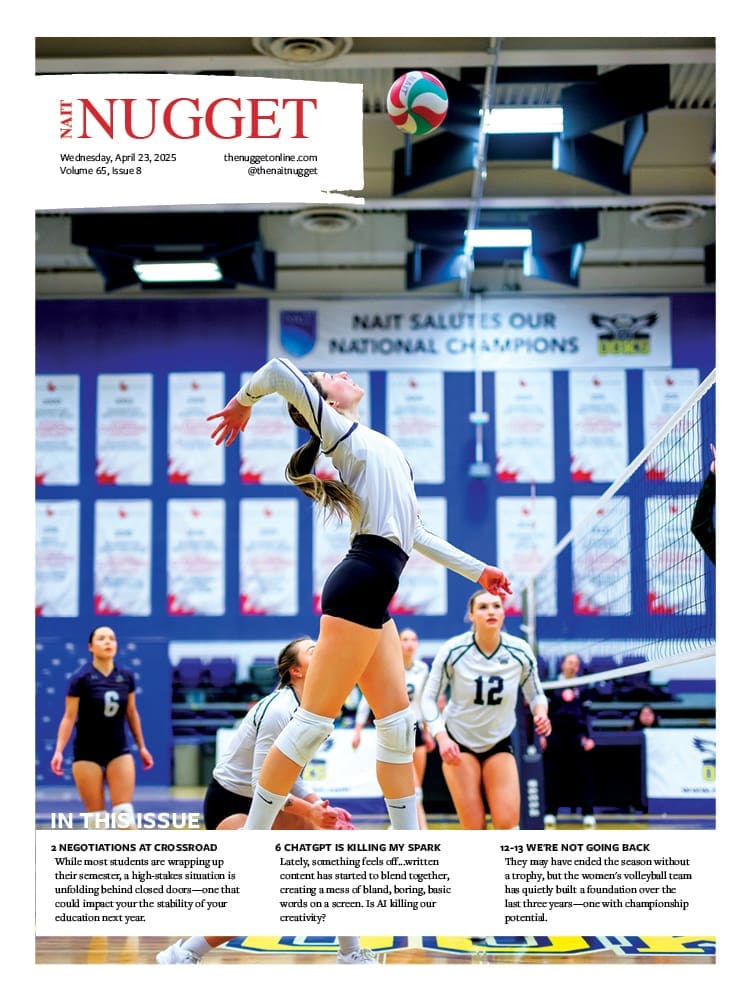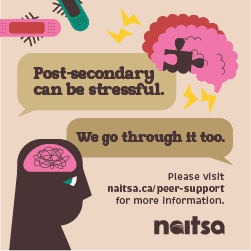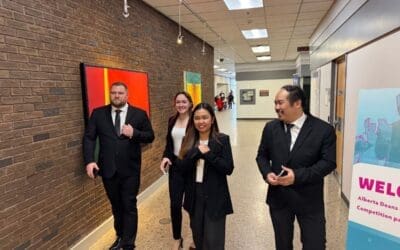Today’s media and news landscape makes connecting with influential figures and their supporters seem easier than ever. But there’s a catch: increased accessibility means anyone can share media to spread a message, making impactful issues trickier to understand.
Approaching media with a critical lens is important and it’s also a skill students can learn. Harpreet Kaur, an English Language PhD and NAIT instructor, teaches an elective course that helps students learn media literacy. In Critical Reading and Writing (COMM3321), students examine “various forms of literature and media as a basis for evaluating and critiquing social, political, economic, and environmental issues.”
Kaur shared various ways students can become more media critical, but confronting their own biases is a crucial step. Confirmation bias is the bias an individual has based on exposure, which shapes their outlook. For example, people can have different views depending on upbringing, culture, or economic status. And regardless of how well-informed someone is, confirmation bias “is very much there in each and every human being,” said Kaur.
“It’s the one kind of bias that’s in your control. I love it for that because it’s not something that’s there in the [media]. It’s something that is in you. You have a certain belief system, a certain trust in certain governments or people, for example, that’s already there,” said Kaur. “And that always puts a lens in front of your eyes when you’re looking at something.”
It’s something that can be oversimplified, too. “We like certain people, and we don’t like certain other people. We don’t have a very valid reason,” said Kaur. Either way, “we need to be very strict with our representatives. We need to always hold them accountable for the promises that they’re making.”
To gather information about a piece of media, students need to investigate who is writing or presenting the piece, what kind of expertise they have and what kind of publication agency or sponsor is paying for the piece. Kaur offered several tips for critically analyze various forms of media to not fall for common traps.
1. Vary your media sources
Avoid looking at a single source of information, and instead, read about the same piece of news from various channels across the world. This allows multiple perspectives on an issue, which makes it easier to spot bias and get the full picture.
Especially when it comes to opinion pieces, Kaur said she tries to have a “glass half empty” attitude. “So, in the sense of, who is left out of this piece? What perspectives are not given?”
2. Pay attention to how language is manipulated
While students have the Internet at their disposal to research a topic, the manipulation of words and language can present red flags that are harder to detect. “Number one is that you need to always be aware of any sort of bias in language,” said Kaur. She added that this includes emotionally charged language. Vague language, rhetorical questions and oversimplification of facts can also shape how political media is perceived.
“This issue of immigration, for example, it’s a very hot topic. And if one politician comes in and they want to blame everything on immigrants and stuff, it’s a very, very oversimplified way of looking at the problem that the governments themselves have created.” Kaur also used discussions around climate change as an example of how vague and emotionally charged language can sway opinions without directly addressing what needs to be done.
Bifurcation—giving readers or viewers “either or” options—is another way language is used to influence the public’s opinions. “Just kind of motivating them in a way whereby you’re touching on maybe their patriotic feelings, for example, but you’re not giving them more than one choice. It’s either ‘you’re with us, or you’re against us’ sort of a situation,” Kaur explained.
Politicians also use slogans and phrases to present ideas, but they can be misleading. “There’s so much to these phrases that are very commonly used. One needs to kind of be a surgeon and take away each part of this phrase and try to see individually if there’s any meaning in it,” said Kaur.
3. Visual representation matters too
According to Kaur, how a public figure presents themselves, whether through physical appearance or body language, may indicate their intentions or character.
“All of these signs and symbols, they’re very much there in front of our eyes, but we need to have the information and awareness about people who are in power these days,” she explained. “Where their allegiances are, or where they stand in terms of money, how much shares they own in the world, you know? How economy drives politics is also very important to look at.”
4. Step outside of your pocket
Kaur believes educational institutions like NAIT can play a role in helping students become informed citizens – collaboration through group work, for example, can expose students to views they may not have heard before.
“But at the same time, often it does not reach its full potential because people are still living in pockets,” said Kaur. She explained how in some of her classes, students are more likely to engage with those who look like them or speak the same language as them. “We all need to open up as a society to be open to different kinds of exposures and experiences that we can get. And that brings in an automatic information world that you were not previously aware of, right? So, it’s very important to be open and actually multicultural in your approach.”
“One policy that I always live by in terms of education is that, you know, don’t go easy on yourself. Be ready to be offended. Because if you don’t have that faculty in yourself to sit and listen to the other perspective, you’re not gonna grow. So, one has to develop that kind of patience in them in order to see the full picture from the other side, as well,” said Kaur.






